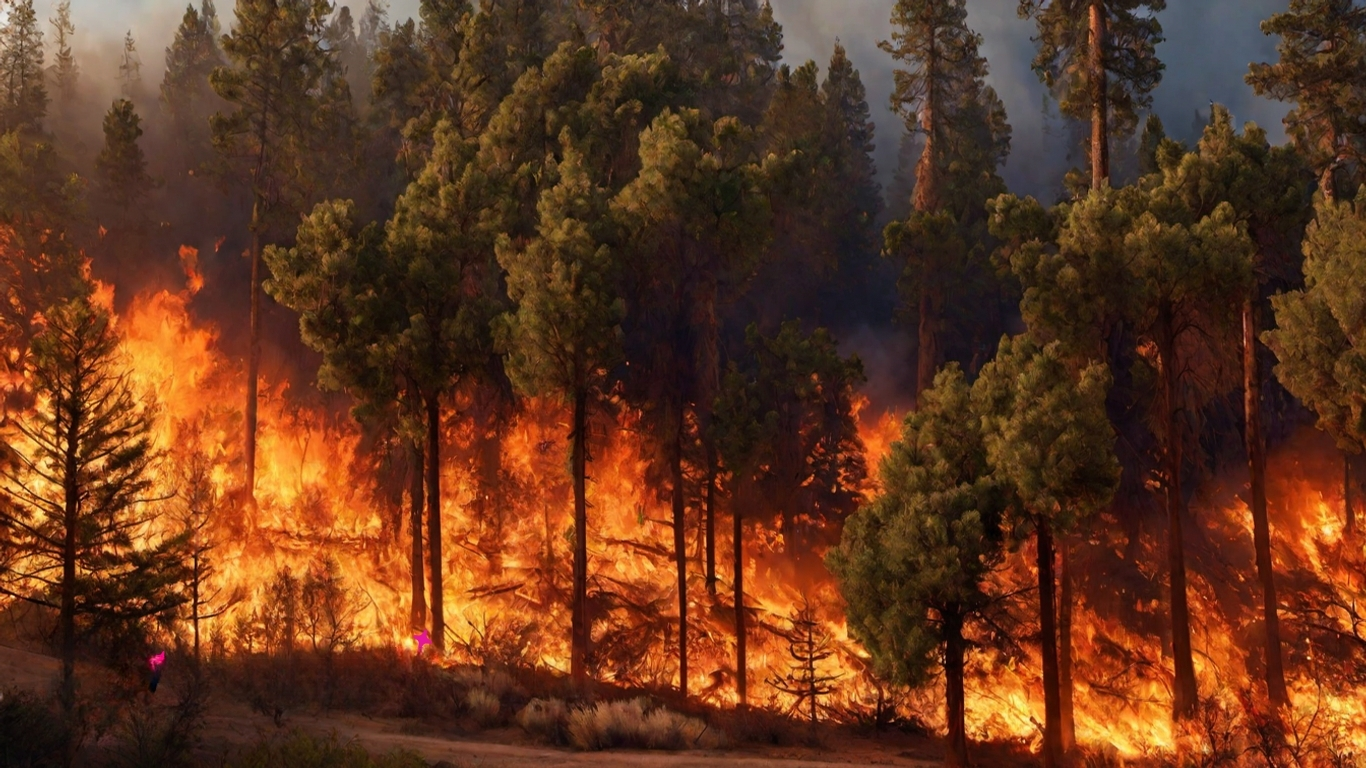Warming Climate Amplifies Daily Wildfire Growth Risk in California
A recent study delves into the distressing correlation between rising temperatures, aridity, and the alarming increase in extreme daily wildfire growth. As anthropogenic warming takes its toll, critical thresholds are crossed, underscoring the urgent need for comprehensive action.
SciPhar Editor
Wednesday, 30 August 2023

ETFLIN original image generated by AI
Amid California's picturesque landscapes, a pressing concern has taken center stage: the surge of wildfires that have left destruction and apprehension in their wake. Researchers have taken up the mantle of unraveling this intricate puzzle, employing an innovative blend of technology and environmental insights (1). This journey into understanding reveals a captivating narrative that connects rising temperatures, aridity, and the alarming rise of extreme daily wildfire growth.
Wildfires, those ferocious forces of nature, have often defied easy explanation. Yet, in the digital age, a novel approach has emerged. Imagine a digital sleuth driven by machine learning algorithms like neural networks and random forests, sifting through vast troves of historical data. These algorithms, devoid of preconceived notions, have unveiled a tapestry of connections between temperature, aridity, and the staggering potential for rapid wildfire expansion.
Beyond the apparent role of temperature, the spotlight shifts to aridity—a silent accomplice in the wildfire drama. As temperatures rise, aridity, the precursor of dryness, steps into the limelight. It triggers a cascade of changes, impacting variables such as vapor-pressure deficit and dead fuel moisture. This intricate interplay demonstrates that temperature is the first note in a symphony where aridity holds the conductor's baton.
Peering into the heart of the matter, the study boldly fingers human-induced climate warming as the culprit behind the escalating wildfire risk. Armed with simulations and historical data, researchers lay bare the undeniable correlation between our warming planet and the heightened threat of wildfires. The findings paint a stark picture—a reality where each uptick in temperature stokes the flames of uncertainty.
Yet, the story doesn't unfold in a straight line. Instead, it's a dance of thresholds and surprises. Beyond the charts and graphs lie critical thresholds like 10% dead fuel moisture and 1.5 kPa vapor-pressure deficit. These thresholds act as amplifiers, breathing life into the risk and offering glimpses into the intricate choreography of wildfire behavior.
As we gaze towards the horizon, the study offers a glimpse into what lies ahead. Across different emissions scenarios, a disturbing trend emerges. Wildfire risk refuses to stand still; it surges upward with unyielding determination. It's not a question of whether the flames will leap; it's about how high they'll soar—a testament to our choices today.
Yet, this narrative isn't solely about attributing blame but embracing complexity. While temperature takes center stage, other players enter the limelight—wind patterns, precipitation, and fire suppression efforts. The study underscores that our response must be multifaceted, guided by a deep understanding of the delicate balance in nature's dance.

 ETFLIN
Notification
ETFLIN
Notification





